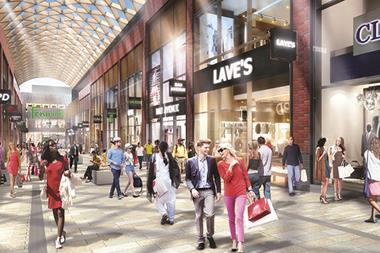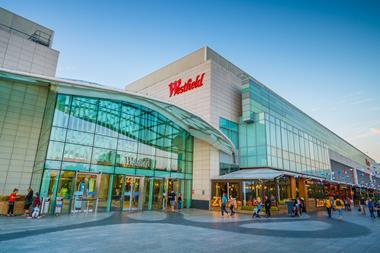Last week, the rebuilt Bracknell town centre opened to the public. Customers in local shops and restaurants may not have been aware of the hard work and endeavour needed to get this far.

With further new towns such as Stevenage, Basildon and Corby - plus other cities and regions - debating similar enterprises, the pioneering nature of Bracknell is sure to be a case study for future retail-led regeneration schemes.
At the heart of it is The Lexicon Bracknell, a brand-new,£240m retail and leisure destination, which is part of £768m being invested in the regeneration of transport, healthcare, education, housing and more in Bracknell Forest.
So what lessons can be learnt from Bracknell? First, a good working relationship with a progressive and proactive local authority is key. From concepts to launch, any regeneration project needs an alignment of objectives and vision with the local authorities.
![]()
Not only will this help during planning and public consultation, but it ensures a holistic, consistent vision. A successful regeneration, especially of a town centre, needs to enhance residents’ lifestyles, while fitting the wider context of improvements being made beyond the development itself. Working closely with the council can help guarantee that a scheme complements other significant investments in the area.
As part of that, knowledge and insight is vital. Having a clear grasp of the history and heritage of - and future projections and prospects for - the residential and business communities creates a destination to visit and enjoy, not a backwater that quickly loses appeal.
The relevant information has come in many forms, from catchment research and demographic profiling to industry trends and commercial agents’ regional reports. Even more importantly, community engagement on the Bracknell redevelopment from local schools, residents and employers meant our vision could be presented and invaluable feedback taken.
Winning back communities
That has been instrumental in winning back the town’s rapidly growing residential and business communities, which previously shopped and dined elsewhere. The regeneration’s social media following, app downloads and website hits, even before opening, showed anticipation for a scheme that appears to have been pitched right for the town.
Projects of this scale can take decades to complete
Projects of this scale can take decades from inception to completion. With the property sector frequently seeing seven- to eight-year economic cycles, industry trends and agents’ research can help predict the prospects for the near-term funding of a massive scheme so that developers can time it right.
Sometimes it seems like trying to align the planets, with many major influences working at different speeds. And it’s important to show local residents momentum, progress and activity rather than promising ‘jam tomorrow’.
The community relations in Bracknell demonstrated understanding of the customers, who have already turned up in droves for the earlier openings of Waitrose and Marks & Spencer.
So there you have it: build relationships with the local authorities to ensure good progress and to maximise your chances of making a lasting change for the better. Understand what drives your customers’ shopping and leisure habits to provide a scheme that caters for different community needs. Time it right to best future-proof the scheme from development challenges.


























No comments yet